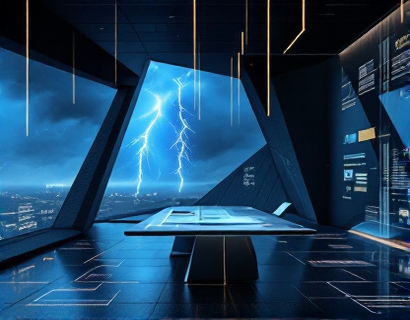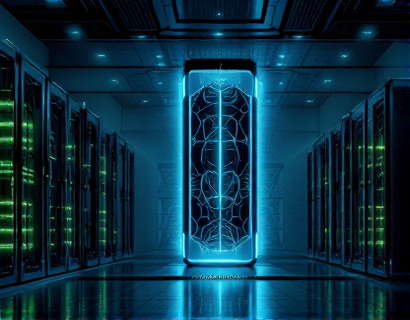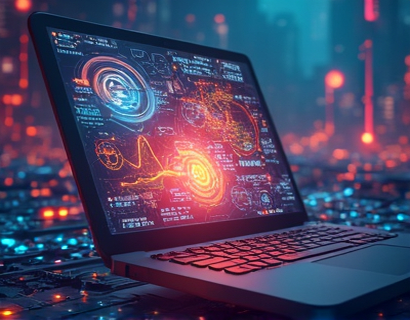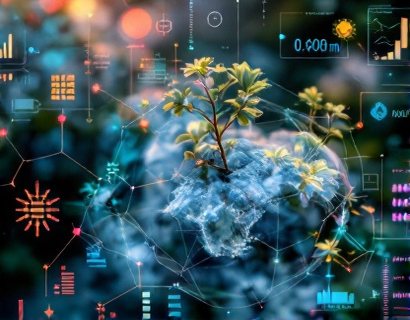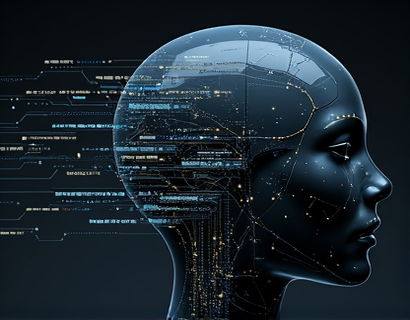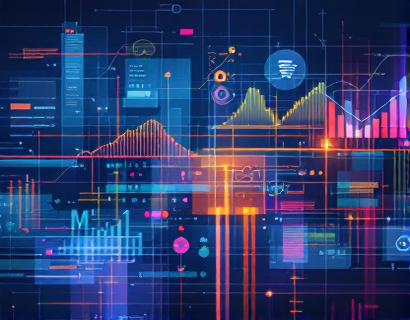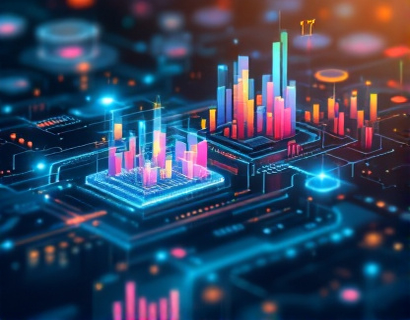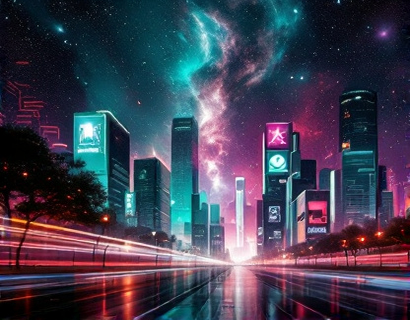Unlocking the Future: Innovative NFT Solutions for Digital Creators and Collectors in the Evolving Landscape
The digital age has ushered in a new era of creativity and ownership, particularly with the advent of Non-Fungible Tokens (NFTs). These unique digital assets have revolutionized the way creators and collectors interact, own, and trade digital content. This article delves into the cutting-edge NFT solutions that are reshaping the digital landscape, offering unprecedented opportunities for digital creators and collectors. By exploring the intricacies of these innovative platforms, we aim to provide a comprehensive understanding of how NFTs are redefining digital ownership and fostering a vibrant community that pushes the boundaries of digital innovation.
Understanding NFTs and Digital Ownership
To fully appreciate the impact of NFT solutions, it's essential to grasp the fundamentals of NFTs themselves. Unlike traditional digital files that can be replicated infinitely, NFTs are unique and verifiable on a blockchain. This blockchain technology ensures that each NFT is one-of-a-kind, with a distinct digital signature that cannot be altered or duplicated. This inherent scarcity and authenticity are what make NFTs valuable and sought after by creators and collectors.
Digital ownership, a concept made possible by NFTs, allows creators to prove ownership and provenance of their digital works. This is particularly significant in an era where digital content can be easily shared and replicated. By leveraging blockchain, creators can ensure that their digital assets maintain their value and integrity, providing a level of security and trust that was previously unattainable in the digital realm.
Empowering Creators: Crafting Unique Digital Assets
For digital creators, NFT solutions offer a powerful tool to monetize and distribute their work in new and exciting ways. These platforms provide intuitive interfaces that allow artists, musicians, writers, and other creatives to mint their digital assets as NFTs. The process is straightforward: creators upload their digital files, set parameters such as price and royalties, and then mint the NFT on the blockchain. This not only ensures the uniqueness of their work but also provides a transparent and secure way to sell and distribute their creations.
One of the key benefits for creators is the ability to earn passive income through royalties. Many NFT platforms automatically track secondary sales, ensuring that creators receive a percentage of the sale price every time their NFT is resold. This feature incentivizes creators to continue producing high-quality content, knowing that they will benefit from the ongoing value of their work.
Enhancing Collector Experiences: Discovering and Owning Digital Assets
Collectors, on the other hand, find NFT solutions to be a treasure trove of unique digital assets. These platforms offer a curated marketplace where collectors can discover, purchase, and own rare and exclusive digital items. The transparency provided by blockchain technology allows collectors to verify the authenticity and ownership history of each NFT, adding a layer of trust and reliability to the collecting process.
Moreover, NFT marketplaces often feature community features that enable collectors to connect, share, and discuss their interests. This fosters a sense of belonging and community, enhancing the overall collector experience. Collectors can participate in auctions, join private sales, and engage with other enthusiasts, all within a secure and user-friendly environment.
Innovative Features of NFT Platforms
Beyond the basic functions of creating, trading, and managing NFTs, innovative platforms are introducing a range of features that further enhance the digital experience. One such feature is the integration of interactive and immersive elements. For instance, some NFTs can unlock exclusive content, such as behind-the-scenes videos, artist interviews, or interactive experiences. This adds a dynamic layer to the digital asset, making it more engaging and valuable for both creators and collectors.
Another innovative aspect is the incorporation of gamification elements. Some platforms introduce challenges, quests, and rewards to encourage user engagement and participation. For example, collectors might earn badges or tokens for completing certain tasks, which can be redeemed for discounts on future purchases or access to exclusive events. This gamified approach not only enhances user experience but also builds a more active and loyal community.
Community Building and Collaboration
The true power of NFT solutions lies in the communities they foster. These platforms serve as hubs where creators and collectors can collaborate, share ideas, and support each other's growth. Community forums, social media integrations, and in-platform messaging tools facilitate communication and collaboration, breaking down barriers and fostering a sense of unity.
Collaborative projects are becoming increasingly common, where multiple creators work together to produce a single NFT or a series of interconnected NFTs. This not only amplifies the creative process but also expands the reach and impact of the final product. Collectors, too, can participate in community-driven initiatives, such as group purchases or joint ownership of rare NFTs, further strengthening the bonds within the community.
Scalability and Interoperability: The Future of NFT Ecosystems
As the NFT landscape continues to evolve, scalability and interoperability are crucial factors for the long-term success of these platforms. Scalability ensures that the infrastructure can handle a growing number of users and transactions without compromising performance. This is achieved through advanced blockchain technologies and layer 2 solutions that optimize transaction speeds and reduce costs.
Interoperability, on the other hand, allows NFTs to seamlessly move across different platforms and ecosystems. This is particularly important for creators and collectors who use multiple services. By supporting standard protocols like ERC-721 and ERC-1155, NFT platforms can ensure that assets are compatible and transferable, enhancing the user experience and expanding the potential market for digital assets.
Sustainability and Environmental Considerations
The environmental impact of blockchain technology, particularly proof-of-work (PoW) blockchains, has been a point of concern. To address this, many NFT platforms are shifting towards more sustainable blockchain solutions, such as proof-of-stake (PoS) or environmentally friendly alternatives. These approaches significantly reduce the energy consumption associated with blockchain transactions, making the ecosystem more eco-friendly without compromising security or functionality.
Additionally, some platforms are exploring carbon offset initiatives and partnering with environmental organizations to further mitigate their ecological footprint. By prioritizing sustainability, these platforms not only appeal to environmentally conscious users but also contribute to a more responsible and forward-thinking digital landscape.
Regulatory Compliance and Legal Considerations
As NFTs gain mainstream acceptance, regulatory frameworks are beginning to take shape. Understanding and complying with these regulations is essential for the legitimacy and growth of NFT platforms. This includes adhering to laws related to securities, intellectual property, and consumer protection. By maintaining transparency and adhering to legal standards, NFT platforms can build trust with users and avoid potential legal pitfalls.
Moreover, clear guidelines and best practices for creators and collectors can help navigate the legal landscape. This includes providing information on copyright laws, licensing agreements, and the rights associated with NFT ownership. Educational resources and support from the platform can empower users to make informed decisions and protect their interests.
Conclusion: Embracing the Future of Digital Creativity and Ownership
The integration of NFT solutions into the digital ecosystem represents a significant leap forward for creators and collectors alike. By providing a secure, transparent, and innovative platform for crafting, trading, and managing unique digital assets, these solutions are redefining the norms of digital ownership and creativity. The future of NFTs holds endless possibilities, from immersive interactive experiences to collaborative artistic endeavors, all within a vibrant and supportive community.
As the technology continues to evolve, it is crucial for creators and collectors to stay informed and adapt to the changing landscape. By embracing these innovative NFT solutions, digital creators and collectors can unlock new opportunities, enhance their digital presence, and contribute to a more dynamic and inclusive digital world.




